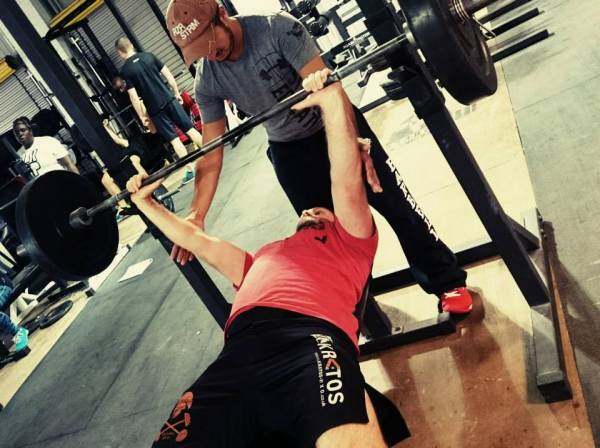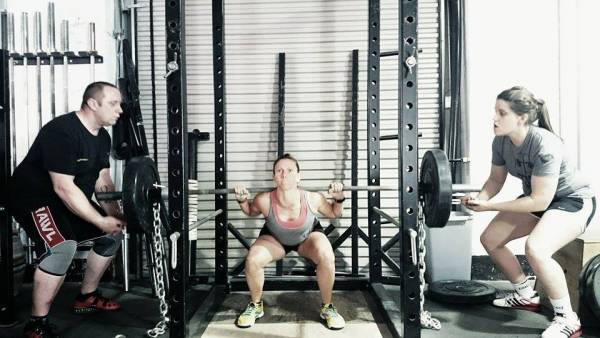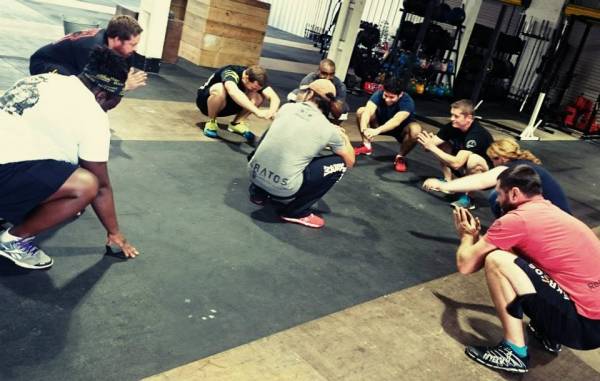I’m often asked to write individual strength programs. However, I take on very few of such requests, because when I write one of these programs, it is exactly what it says it is – individualized. This takes a lot of time, and sadly, I’m unable to afford the time to do too many.
I’m often asked to write individual strength programs. However, I take on very few of such requests, because when I write one of these programs, it is exactly what it says it is – individualized. This takes a lot of time, and sadly, I’m unable to afford the time to do too many.
When I turn down a request to write an individual strength program, the next question is usually about recommending a good general strength program. This is where the options open up. There are plenty of fantastic strength programs out there to choose from. But sometimes too much choice can be bewildering, especially when everyone is telling you their way is the best way. The only way to do it is to determine what you are looking for and assess your program against those objectives.
Here are seven indicators to help you mark off your options and work out exactly what is right for you.
1. A Solid Strength Program Gets You Stronger
“Oh, come on, seriously? I mean, that’s pretty obvious isn’t it?” I can hear you from here. But if it’s so obvious, why do so many strength training programs fail to achieve this objective? A strength training program that doesn’t get you stronger is like a stack of Eleiko bumper plates without a barbell. It might look good, but it’s mostly pointless and frustrating.
However, be clear on what you want from the program before you start. You and the program need to be in mutual agreement about your definition of strength. Even if you are competing in a strength sport, have you considered it may not be your max strength that is holding you back? Think strength endurance or explosive strength – these are all aspects of getting stronger and may well be more relevant, or at least just as relevant, to you as max strength.
Remember, a one-rep-max (maximal strength) is not the only display of strength and is certainly not the only form of useful or trainable strength.

2. A Solid Strength Program Keeps You Away From Injury
Getting stronger is not an at-all-costs objective. If your program gets you stronger but f***s you up, what’s the point? Unless you’re a top-level lifter gunning for your one chance at a title (and even then), I would say it’s probably not worth it.
What’s the point in being strong if you are injured? When I consider strength, I don’t consider it in a max-out-and-die perspective. I consider it in a bulletproof-and-live perspective.
A good strength program will move you further away from injury, not draw you closer to it. Can you say your training program does that?
3. A Solid Strength Program Regulates Intensity
This can come in many forms. The best programs have a way of self-regulating the intensity. A program based on strict, unwavering percentage work does not allow for regulation in accordance with your state and ability on that particular day. And not allowing for this can mean that you can either dig yourself into the ground trying to hit an unattainable number, or leave gains on the table.
This doesn’t mean all percentage-based programs are bad. Take Jim Wendler’s 5/3/1 as an example. There are percentages, but there’s also room on your top set to hit a number of reps, which is in accordance with how on point you are that day (plus a deload week every fourth week.)
So what does a self-regulating program look like? It might use a system that helps to manage intensity within workouts (look up the RPE system by Reactive Training Systems.) It might involve a conjugate system to create adaption without the need to keep upping the weight or volume on the same equipment, which asks tough questions of your body as time goes on.
The simple version – look out for programs that look out for you.
4. A Solid Strength Program Takes Time
I’ve said it before and I’ll say it again – sustainable strength takes time to build. It’s easy to get lured in by the promise of “Ten kilos on your squat in six weeks,” but consider your reason for building strength here. Do you want strength for now, or forever? If you are peaking for a competition with little regard for long-term strength, then go ahead and take the short-term approach. But bear in mind that strength gained in this way may not last – that is, if you get there without falling down the injury trap.
I know it’s difficult when the path to quick success is laced with the promise of heavy things in just a few steps. But if it sounds too good to be true, in this game, it probably is.
If you are interested in long-term strength, as most of us are, then you must be prepared to accept that this is best built through small steps and incremental increases.

5. A Solid Strength Program Keeps You Hungry
What is better – a program that smashes you into the ground so much that you dread each session, or a program that leaves you psyched for more?
Don’t get me wrong. Getting stronger requires hard work, and hard work isn’t always particularly enjoyable. Also, a little dread before a workout can be healthy. But I’m talking about a day-in-day-out motivation. Granted, some people love to smash themselves into the ground, but sooner or later either your mind or your body is going to rebel.
The biggest cause of lack of success through a strength training program comes not from the program but from you. Specifically, you not finishing or being inconsistent with the program through injury or lack of motivation to continue. We’ve already covered injury. So make sure your program is enjoyable enough and sustainable enough to keep you hungry.
Sustainable – there’s that word again. Funny how the same concepts keep on coming back round, isn’t it?
6. A Solid Strength Program Improves the Movement
Yes, that’s right. A good strength program will improve the movement or movements at hand. This is perhaps not one of the most obvious markers of a good strength program, but it hits the spot on a number of levels.
A good strength program will groove movement on the main lifts through appropriate weights and reps. If the weights prescribed in the program are pulling you out of position for the majority of your reps, they are too heavy.
This is, of course, dependent on the fact that the movement you want to improve is actually one of your lifts. It may well not be. In that case, a good strength program will improve the movement through suitable variations, and ideally also by building up the major contributing muscles.
Building strength and improving movement quality go hand in hand, and a good strength program will include both by design.

7. A Solid Strength Program Is Simple
Good programming is simple. And this article is simple, too. If you’ve not guessed it already, I love simplicity. I have a mind that works in simple ways.
For the majority of us, there’s no need for programming to be complex. Often I’ll see complexity thrown into program for little more reason than to make the coach feel clever, or to appear to be clever in the client’s eyes. However, the cleverest coaches are the ones who can simply the most complex functions into simple coaching and programming.
Your program should use only as much “complexity” as required.
Assess, Apply, and Act
Use these seven markers as a checklist again your current or potential strength program. Am I saying that if your program doesn’t comply with each of these markers precisely that it is no good? Not at all. I’m saying a program that meets the majority of these guidelines is better for your long-term strength and health than one which meets just a few of them.
I’ve given you the markers. It’s up to you to assess, apply, and act on what is best for you. Good luck, and let me know if you have any questions.
Photos courtesy of Strength Education.






